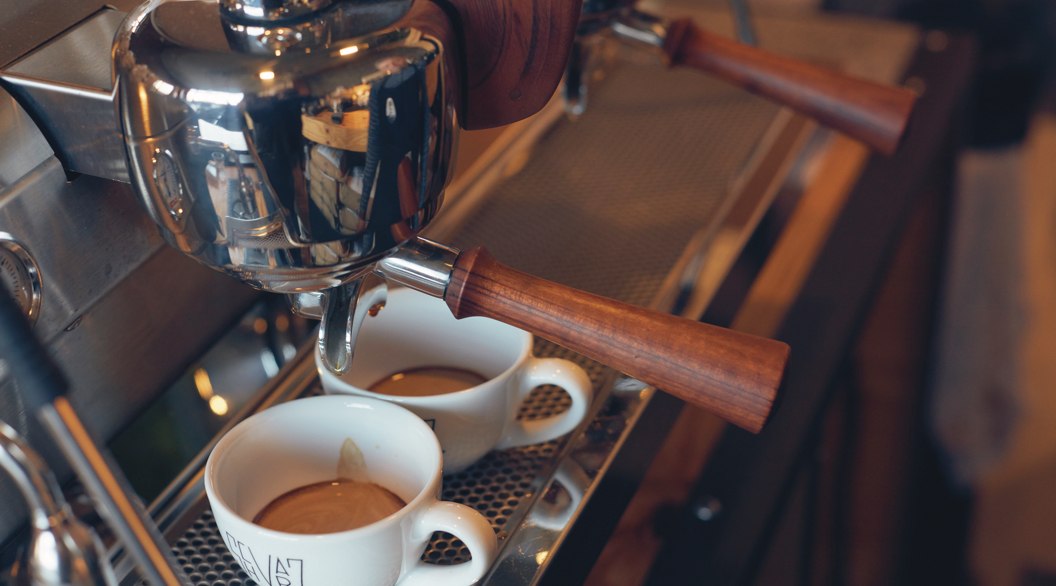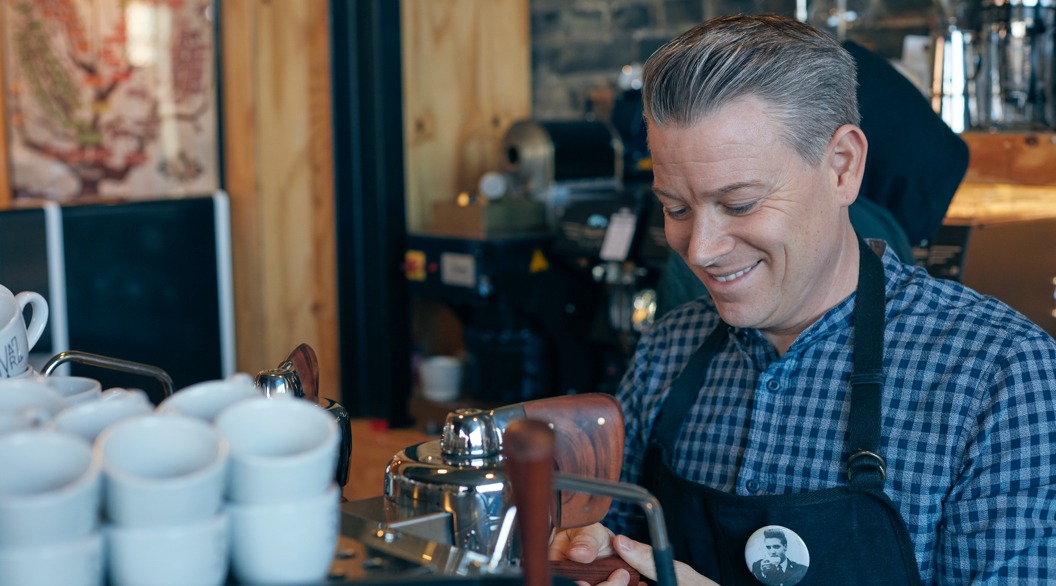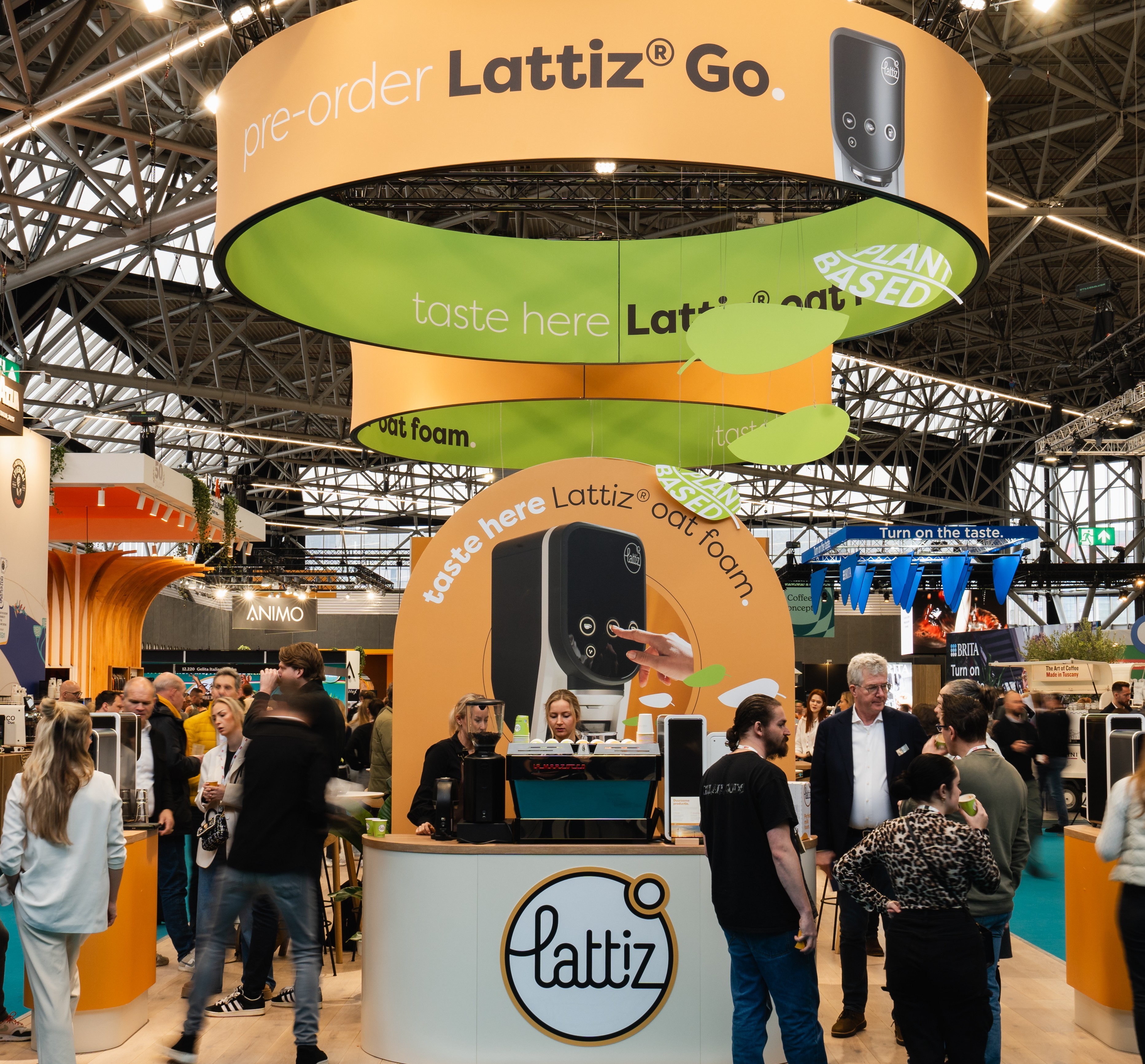Norman Magolei
A professional barista without an outlet of his own? Yes, you heard it right!
Norman Magolei indulges in his passion for coffee at events, exhibitions and championships. How he brings together the hip coffee scene and the baristi at an integral base, how he whizzes through world history and why does milk foam tickle his fancy, let's hear it straight from the man himself in this interview.
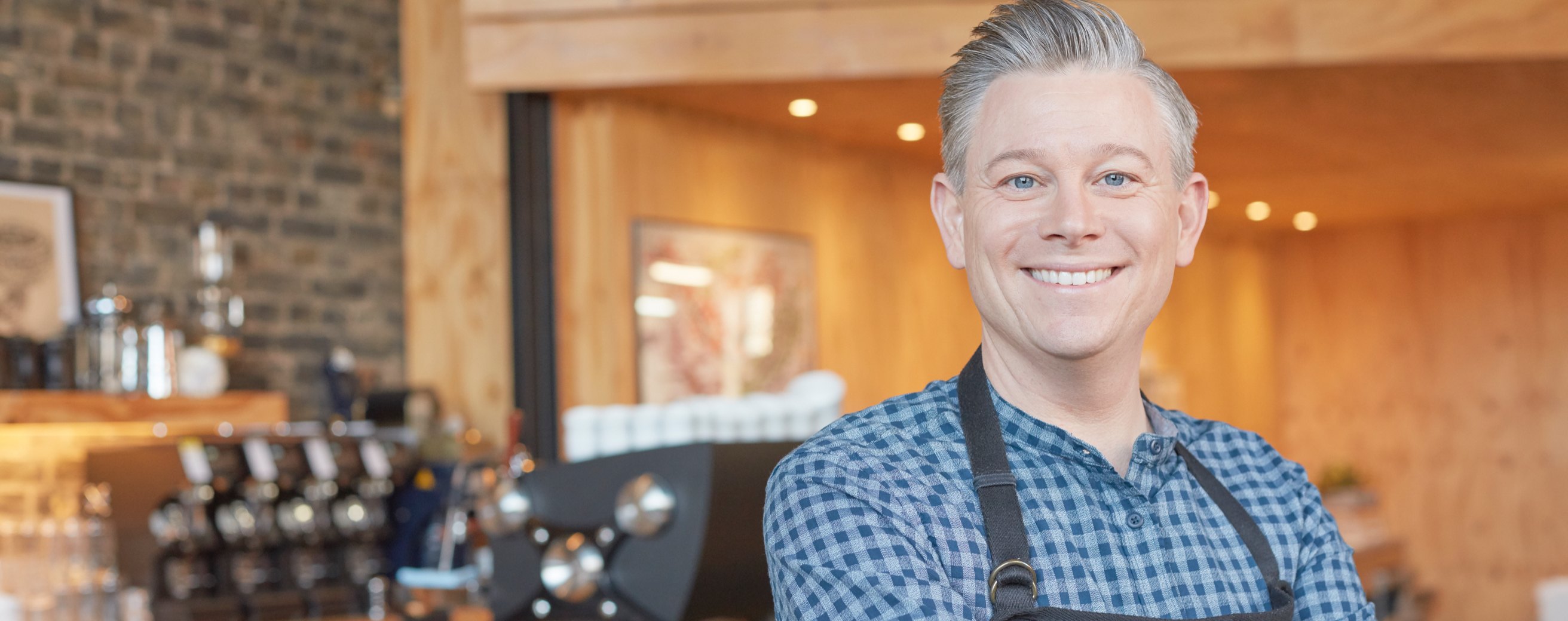
Norman Magolei sits in a small café on Carlsplatz in Düsseldorf and drinks a hand-poured filter coffee. The native of Viersen talks about nuances and flavours in his favourite brew with brio and bravo- he is not only a trained barista of the Specialty Coffee Association (SCA), but also a coffee sommelier. When he raves about peaches or berries in his coffee, you can’t help but notice: The man is in his element. Magolei plays barista at major gastronomic events such as the Internorga or the Intergastra, explains varieties, roasts and flavours to trade fair guests, foams milk and serves hot brews. Or he plays host in competitions such as the Crazy Barista Battle in Cologne, trains employees for big-shot companies in the coffee industry and comperes home shopping programmes. By the way, he is also a party singer. And he is also a family man. It’s never blah for Magolei.
How did this devil of a fellow chance upon coffee? By fluke, recalls Norman. His wife has been in the coffee business for quite some time; she is a marketing professional. And when a barista dropped out of a trade fair, Norman was called. “Why not, I thought. How hard could making a cup of coffee be," he recalls gleefully. He made filter coffee all day long and served it in classic thermos jugs. "But next to me I saw the real baristi work and I was really fascinated." When the head of marketing of a big coffee company wanted to book him for training courses, provided he had the necessary know-how, the fascination quickly turned into a plan. After his barista training at SCA, he was trained as a sommelier at the coffee school in Hanover. "Then I invested in a quest to the roots. I went to Ethiopia, picked coffee and got to know the producers. This helped me honour the worth of coffee, for since then I have known how difficult it is to process it."
Being out there in the thick of things is important
Since then, Magolei has been on the road a lot. 2014 was his year, when he won two prizes, the Cafétier of the Year and the International Barista Champion. Although he comperes at trade fairs and events or takes part in championships sometimes, more often than not, he is ‘being there, doing that’. Norman sees this as a world of its own: "The toughest part is to get started, that’s what I find the most difficult.” Especially in his training courses for coffee companies, it is important to him to combine expertise and economic aspects: "At the end of the day it is of no use, if you have a bomb of a coffee at an awesome place, but don't earn any money. Everything has to fit together and that's what I'm trying to bring together."
He thinks being out there and being accessible to your customers are both very important
If you ask him what his favorite latte art motif is, Norman grins and says: "Undoubtedly: the heart." Precisely the milk foam motif that elicits a bit of a yawn from many latte-art enthusiasts. Norman sees it from the customer's point of view: "It's a great way of inspiring most people, because everyone can do something with their heart." This is how it looks from behind the counter in everyday business: "A man comes in with his wife and orders two cappuccinos. Then I make a heart and a small leaf, because I know for a fact that he will proudly put the cup with heart down for his wife and say "Look what I got for you. You have won as a barista, and that's all you have to do." Norman knows from his workshops and trainings that the basic motifs like heart, leaf, tulip, fir tree and the like work well for many baristi with a little practice.
This way, they can inspire customers with a little something that barely requires effort but leaves a great impression. Norman remembers another motif that was quite gratifying - the logo of the Fortuna Düsseldorf football club: "I created the club logo for a customer at the trade fair who is a Fortuna fan. He was thrilled, immediately took photos and posted them promptly on the social media channels."
The simple motifs are more likely to appeal to people, and Norman has had this experience time and again. "You make some coffee art, turn the cup, work yourself to the bone, all of which is incredibly difficult. You think: very well! and put the cup up for the guest. Then you make a heart and the guest totally appreciates it saying: Isn’t that beautiful!" The extravagant and elaborate motifs are better-suited for championships, the professionals and judges know there’s more to it than meets the eye.
In the daily grind at the café bar, it is often the supposedly mundane little thing that puts a smile on the customer's face. The perfect basis for a beautiful Latte Art, be it heart, football logo or mirrored swan, is the proper consistency of the milk foam. Norman knows the nuts and bolts for success: "You need cool milk because it gives you more time to whisk. It is important that it is homogenised so that the fat molecules are all the same size. And the protein content is also crucial." It should be at least 3.3 grams per 100 millilitres; if it is less by even 0.2 grams, it will prevent the milk from being foamed properly. The fat content does not play a role in foaming, but it carries the flavour. "That's why I recommend full milk rather than low-fat milk."
A test-shot every morning
The perfect milk
For the competition in which he last took part, Norman put a lot of effort into milk. "I made the milk stronger. I took the inspiration for this from a world championship." He froze the milk and then put the block of ice upside down. The first thing that drips off is water. "Proteins, fats, everything in the milk stays put. And that is how the milk was compressed. I used this creamy, sweet milk, it has a great taste and you can foam it up well." Magolei knows that this is obviously not feasible in everyday life at the bar. That's why he finds the Lattiz® milk foaming machine handy, especially for the hectic daily grind: "I went to the factory in Holland and had them explain everything to me; it was super interesting.
The Lattiz® milk has special protein content, and water is extracted from it. It has a viscous and rich, creamy consistency and the machine adds water again, foams it, portions it and heats it." Ideal temperature is particularly important. Milk that has been exposed to too much heat is a disaster, says Magolei. “It’s the mother of all horrors when you can already hear the hissing noise while foaming. Then I know it’s a catastrophe: flat, burnt, thick milk bubbles! That doesn't happen with Lattiz®, the temperature is always perfect." Of course, if your milk foam is ideal, perfect coffee isn’t far away. For Norman, it’s not just the classic Arabica that belongs in a good blend: "Many of the top baristi swear by 100 percent Arabica. But especially when you are having your brew with milk, you want to taste the coffee. So you take coffee that packs a punch. You certainly don't just want to have milk with a spoon. A good portion of Robusta, preferably a washed roast, not the kind that is lightly roasted: Now that should make a nice mix." Quality assurance is the be-all and end-all. That's why Norman recommends taking a test shot every morning. "Like a good cook! I make sure that I perform the taste check every day."
The bean can change due to humidity and temperature. You also have to keep an eye on the machine; the process of how the coffee is made can also change. "The run-off time should be between 20 and 30 seconds." At some point you will have your Brew Ratio, which you can use to ensure constant quality. Norman explains: "I put 18 grams of coffee in a strainer and see that I have 36 grams in the cup afterwards. That's how you get a constant." If you want to know exactly how much, use the refractometer. "That's quite crazy and high-end, it helps you determine how many dissolved parts the coffee contains." So it is not a must, but the baristi using a scale is normal.
Norman’s personal favourite is the filter coffee, the process centres him. "I make filter coffee every morning with my own hands, that's what I celebrate. I experience coffee in a different way, grind it, clean it, infuse, let it unravel, take a whiff. A bit at a time. It all takes a while, but it's calming and relaxing." Filter coffee has been very popular again for some years now and Norman predicts a step further establishing a sound basis for the future: "We are going back to good, sustainable, reasonable quality. Where does my coffee come from? What are the local conditions like? In the past, they wrote '100 percent Arabica' and everybody took it to face value ! Today people want to know more. Such a lovely development!
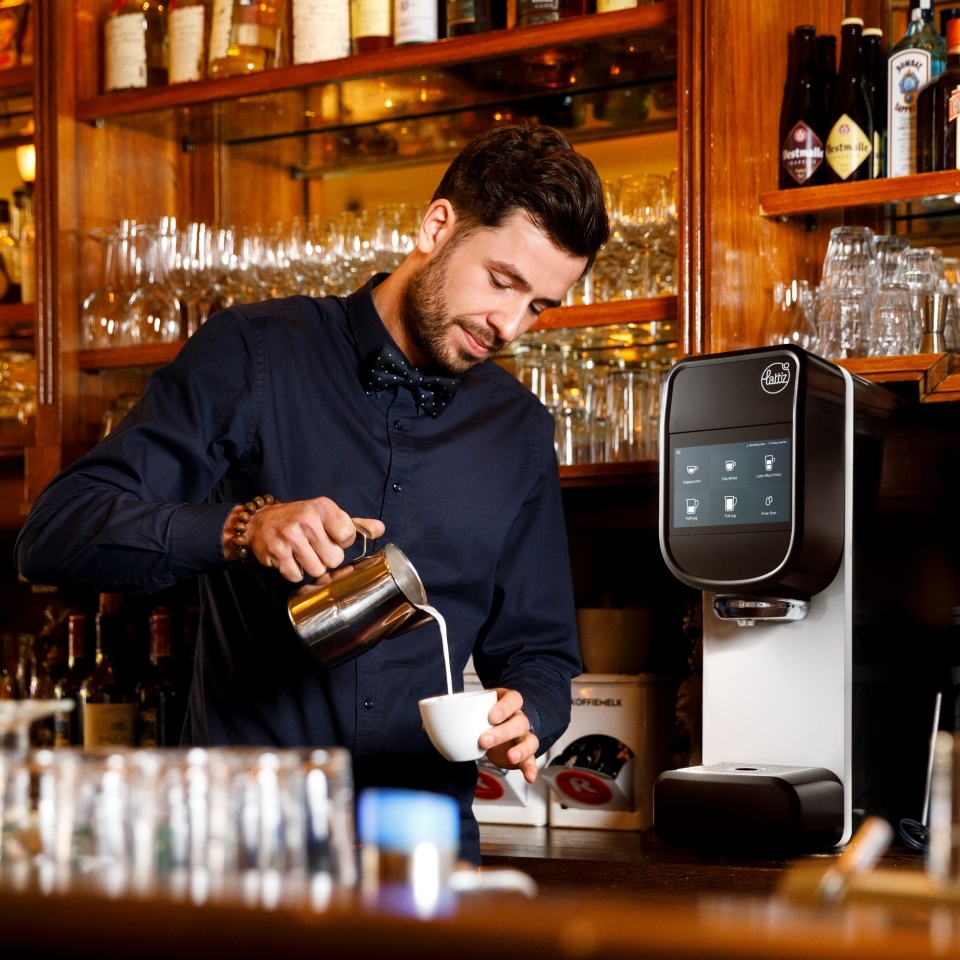
Feel inspired? Experience Lattiz® with a free demo
We'll be happy to show you how it works at your location.
Request a demo